How to Paint a Sloped Ceiling?
10 Tips And Tricks From The Experts
When you need to paint your room, it may already be a complicated task for many homeowners because of such nuances as paint color choice, adjusting the new color to the existing color scheme of the area, proper paint application, etc.
And surely, painting a ceiling is even more tricky because it is at least uncomfortable to do that!
However, if you have sloped ceilings, painting those may turn into a super mission! How to apply paint correctly so that the surface won’t look ugly?
What paint color to choose so that it looks good on the sloped surface?
These are only the minor issues that you may face when painting a slanted ceiling.
This is why we decided to help you folks out a bit and we prepared this article for you today. When you read it, you will definitely learn more about painting rooms with slanted ceilings. But this is just the beginning!
We will also provide you with a detailed instruction os paint application so that you could follow it step by step. Also, we will explain what paint colors will look better than others on this type of surface and why.
Finally, we will share a few handy painting tips with you to always have at hand.
Grab your paint brushes and let’s begin!
Painting Slanted Ceilings Step By Step
When you face the necessity of painting a room with sloped ceilings, you might be a bit puzzled, especially if you have never painted this kind of surface before.
See, applying paint onto a sloped or curved surface is not the same as doing it on a flat surface (for example, on your floor or a regular flat ceiling, or a wall). In addition, the paint color choice will also differ due to the specifics of the surface.
If you have a regular flat ceiling that is horizontal, it can be painted the same color or painted a separate color from the four vertical sides, otherwise known as the walls.
A flat ceiling is basically like a floor only turned upside down! But when a ceiling folds, bends, or slopes, the square space of your room has now changed.
This is why, if there is a slope in your room, the paint color that you choose must flow up or down the slope!
But how to do that correctly, you may be wondering? Well, the instructions are pretty simple, of course, if you make sure that you follow them step by step precisely.

Choose the Appropriate Type of Interior Wall Paint
The type of interior wall paint determines the way the paint will appear on the ceiling after you apply it onto it.
Flat or satin paints are usually some of the most frequently recommended options you can choose from. Anyway, we recommend you make sure that the paint that you are going to apply to the sloped ceiling compliments the paint on the walls!
Determine the quantity of paint you will require to complete painting the ceiling as well.
This can be easily done by doing some simple calculations: just calculate the surface area of the ceiling and then divide the results by 350 (that is the recommended number of square feet of painted surface per gallon of paint).
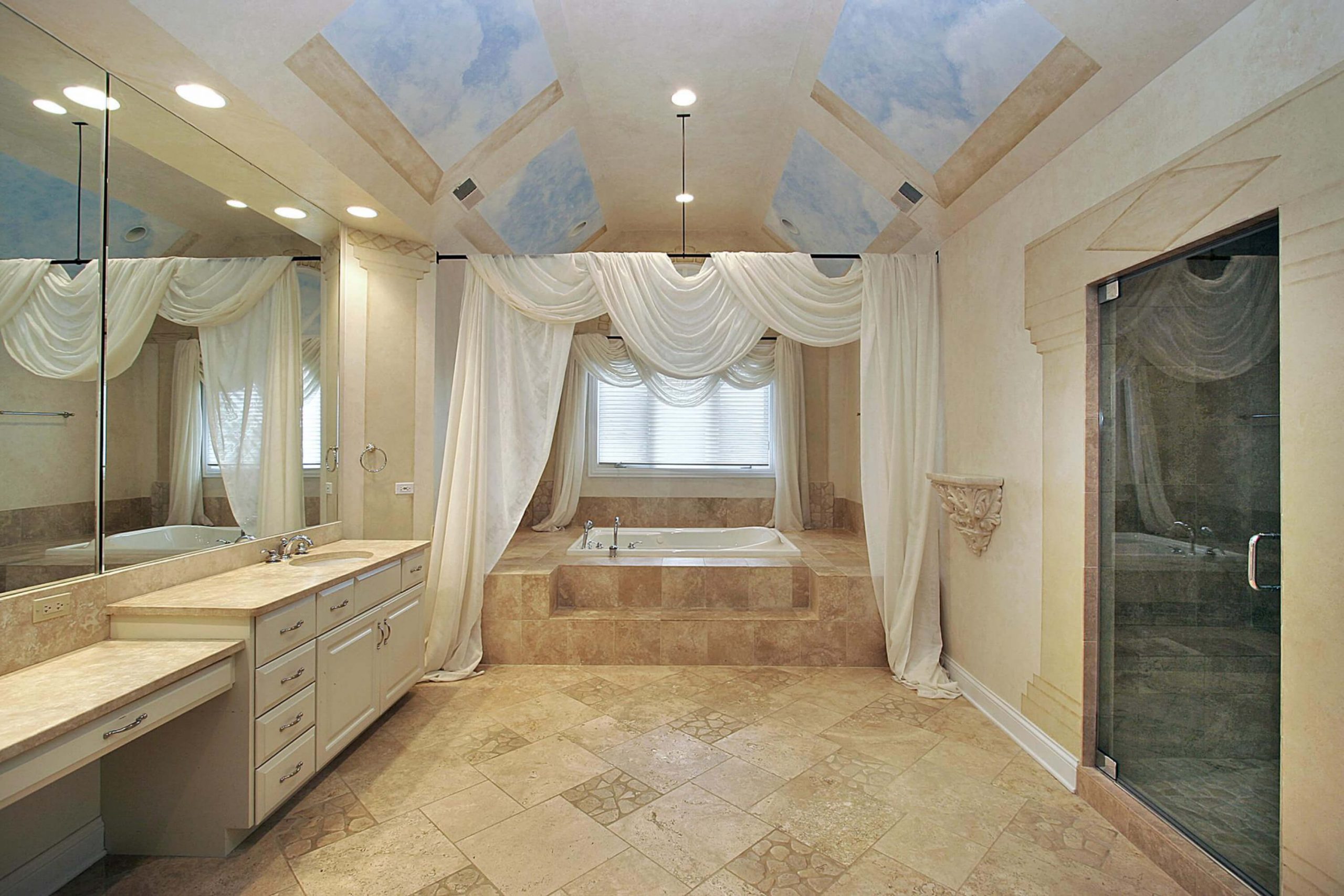
via crello: lmphot
Table of Contents
Select the Best Paint Color
Now you need to choose a color to apply to your sloped ceiling. At this point, some of you may face certain complications.
Although most ceilings are white, we would recommend you still try to match your sloped ceiling with the walls of the room to create a sense of height.
This effect, which causes the lines of the ceiling to visually “disappear”, makes the ceiling look long and lean.
This is why the best solution will be to choose a light color.
It will be able to give a low sloped ceiling the illusion of height or a dark color to enhance the cozy feeling of a study or foyer.
Related: Sherwin Williams White Paint Colors | Detailed Guide
Seal Off All the Unwanted Areas
At this stage of the painting process, use masking tape to seal off the boundaries of the walls and other areas that you want to avoid when painting.
These also include windows, outlets, lights and vents among others.
Protect the Floor Surface
When starting a home painting project, protecting your floor is also important.
Like this, if you do it in advance before you start painting, you will not have to waste your time on removing the paint splatters from it later!
Spread a large piece of material on the floor under the ceiling so that it could absorb any paint drips and splatters that may fall off. Use a ladder if necessary.
At this point, you can ask someone to help you in ensuring that the ladder is stable throughout the painting procedure.
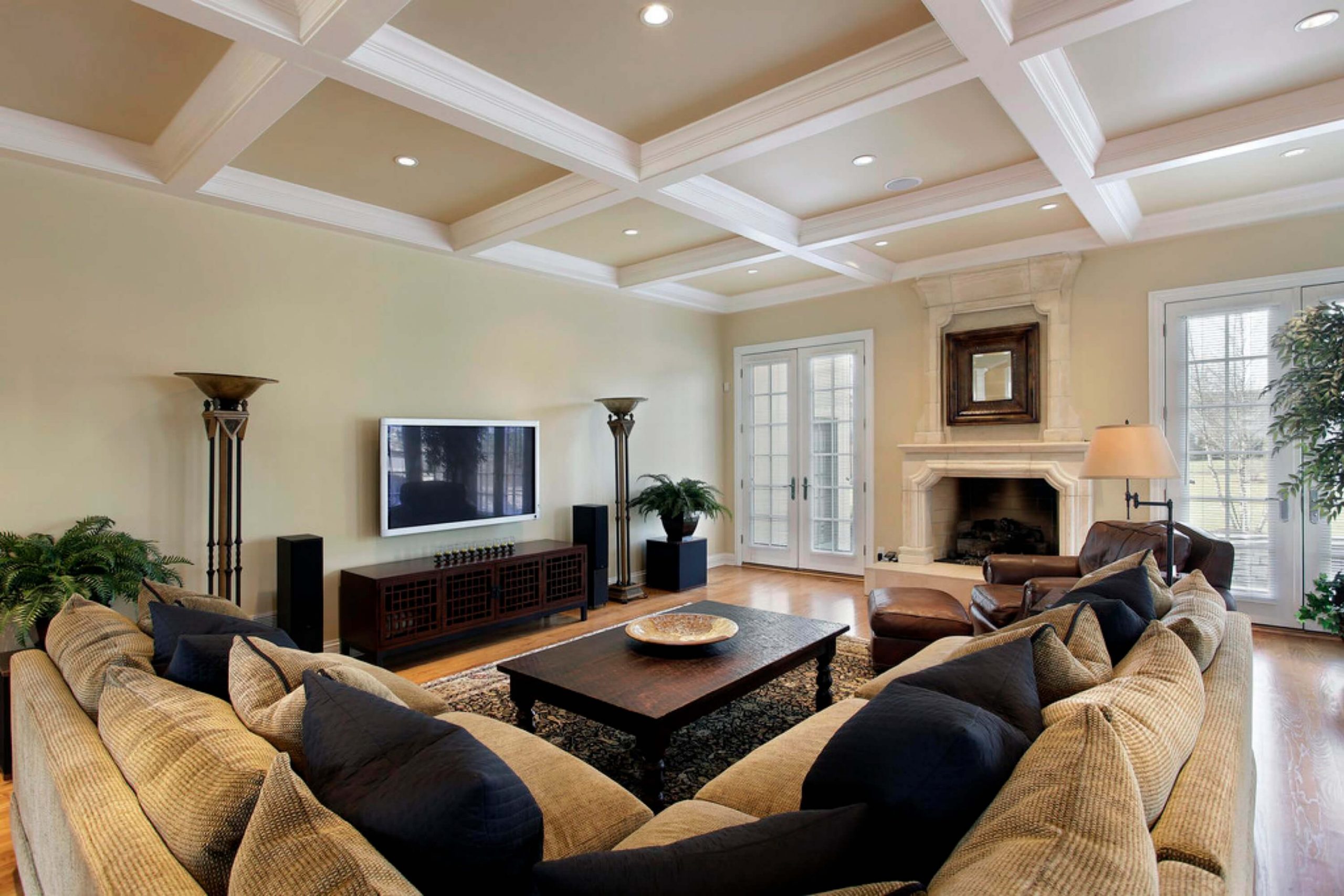
via crello: lmphot
Clean the Sloped Ceiling
You need to get the surface of the ceiling ready for the paint application. Simply dusting before painting is typically enough if the ceiling has a flat finish.
However, in such areas as kitchens and bathrooms, it would be quite a good idea to make use of a clean rag with a mixture of warm water and dish soap to clean the entire surface of the sloped ceiling.
Like this, you will make sure that it is completely clean and free from any dust.
Make sure that you give your ceiling enough time to dehydrate entirely before proceeding with the painting process!
Related: How to Get Acrylic Paint Off Wood?
Apply the Paint
Finally, when your room is prepared and the ceiling is ready for the paint application, it is time to start! First of all, using a mixing stick, you need to mix your paint thoroughly in its can and apply it to the surface.
Insert your paintbrush one to two inches into the paint can and paint the surface area of the ceiling, bends, and other hidden spaces. Then, with the help of a paint roller or paintbrush (whichever you prefer to use), paint the remaining surfaces as soon as possible.
For better results and better coverage, we recommend you apply the paint with extended strokes moving in one direction. Also, we want to emphasize that it is important that you give the paint enough time to dehydrate according to the manufacturer’s guidelines that can be found on the paint can.
When your paint is fully dry, check the consistency and apply an extra coat where it is needed.
As you can see, painting a sloped ceiling is basically not more complicated than applying paint onto a regular one.
However, due to the specifics of the surface and its location, you need to consider a few nuances and specifics in order to do it successfully.
Related: How to Paint High Places Without a Ladder?
Useful Tips For Painting Sloped Ceilings
It is quite challenging to paint a sloped ceiling, especially if you have no experience in that. Or if you are one of the homeowners who prefer to do this task themselves.
Why is it more challenging, you may be wondering? Well, we can name a few reasons.
- The pointed angles of such ceilings typically require very careful trimming
- Sloped ceilings also need more attention to details when it comes to choosing appropriate paint colors
- Sloped areas tend to show a restrained color shade. Since it is closer to walls than the ordinary ceiling, it has a big influence on the entire room’s color structure which in return influences the feeling of openness
Also, it is important to get properly ready for the painting process, in particular, to get all the necessary tools ready in advance.
Like this, you will not have to rush searching for a rag or a paintbrush in the middle of your painting project!
You will require the following tools and materials before you begin painting your sloped ceiling:
- ladder
- primer
- measuring tape
- paint stirring sticks
- paintbrush
- wide piece of cloth
- cleaning rags
- soap detergent
- masking tape
- rollers
- inner paint
We would also recommend you always have a wet rag at hand with you during the painting process. This will help you clear any flaws and mishaps you might make as you paint.
For instance, if you unintentionally extend beyond the lines of a complicated surface.
In case you are painting the whole room, make sure that you always paint the ceiling first ahead of painting the walls.
And of course, let’s not forget about the basic safety precautions!
- It is essential to make sure that the working environment is well ventilated in order to avoid suffocation from the strong smell from the paint
- Remember to put on protective gears like mouth covers and goggles while painting!
- Follow all the instructions given by the manufacturers of your primer and paint!
If you follow all the tips for painting sloped ceilings that we have listed above, you can be sure that you will have quality and long-lasting sloped ceilings in your room.
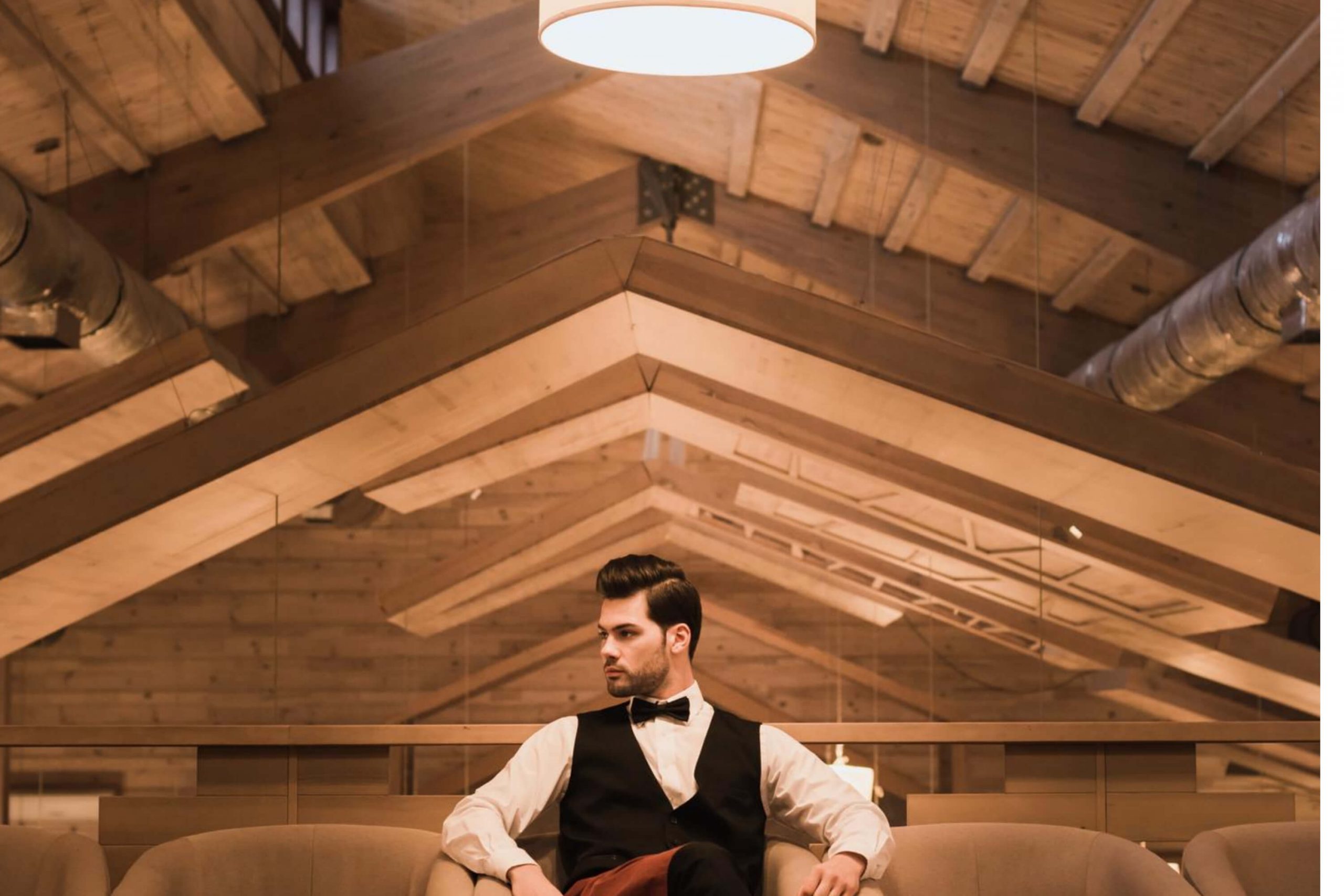
via crello: AllaSerebrina
Related: What Is the Difference Between Ceiling Paint And Wall Paint?
Slanted Ceiling Paint Ideas
Choosing paint color to apply to your sloped ceiling is often one of the most difficult parts of the painting process for the majority of homeowners.
And it makes sense since this type of surface is somewhat tricky in terms of color choice!
Typically, when you have a sloped ceiling that needs a new coat of paint, an ideal selection would be to choose lighter colors for the best results.
A slanted ceiling provides a welcoming space to create contrast and should complement the main walls. So if you choose a lighter paint color, it will make a room feel more spacious and help amplify light.
However, darker colors can create a chic, contemporary room, so you should consider using them too. Below, you can check out a few color suggested for a beautifully executed slanted ceiling:
- White
- Beige
- Gray
- Navy
- Black
- Chocolate Brown
When choosing a paint for your sloped ceiling, the general rule of thumb is the following: if a room feels way too spacious because of a high vaulted ceiling, you should consider choosing a darker color because it will be able to make the space feel and look cozier.
When in doubt, painting all of the walls and ceiling in the same color or using neutral colors for the ceiling work well in most situations.
And now let’s take a closer look at some most popular sloped ceiling paint ideas.
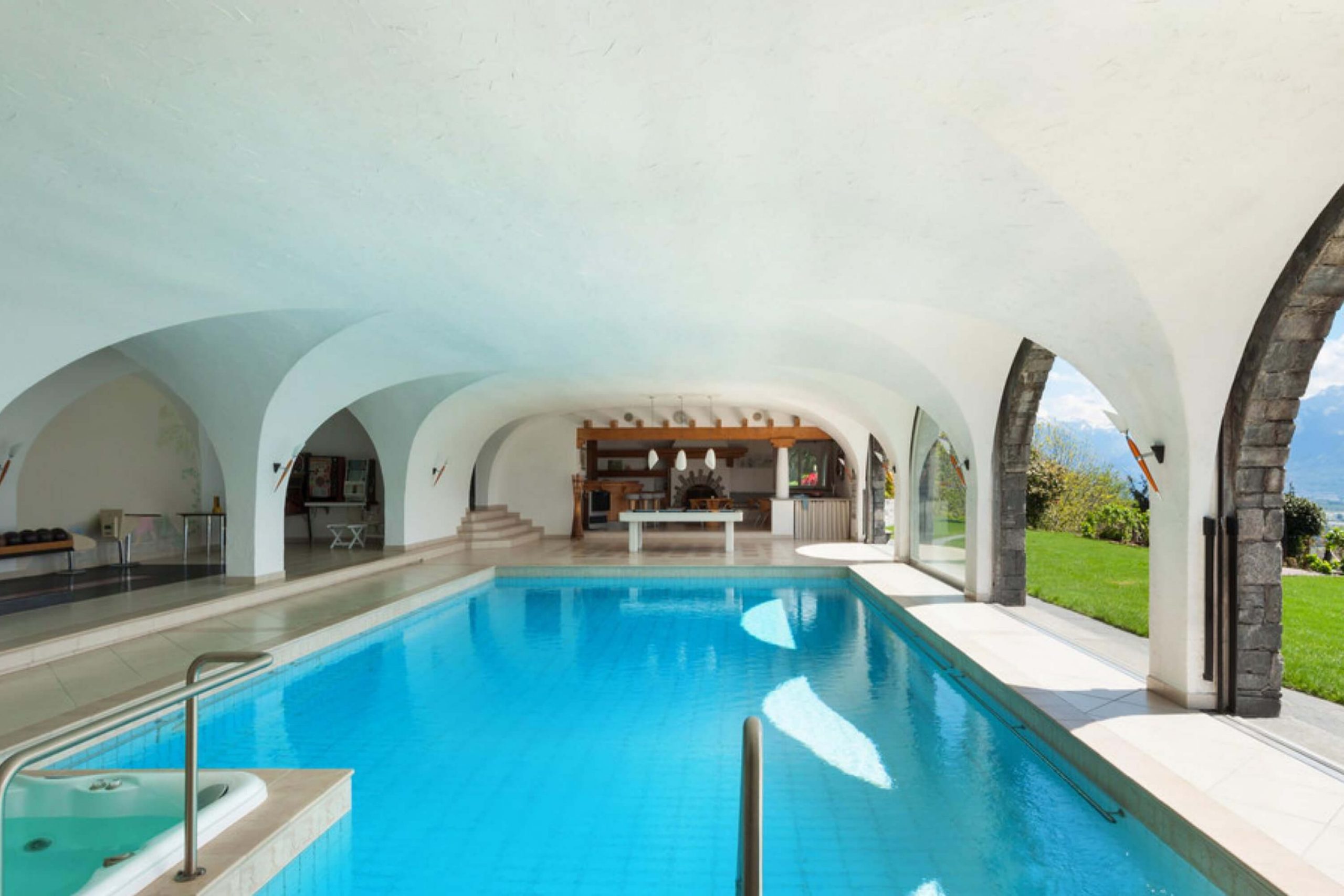
via crello: Zveiger
White Sloped Ceilings
This is the most traditional color choice. It will help you to amplify the light in a room with a coat of bright white for a sloped ceiling.
The sense of open space will let plenty of natural light in and highlight other items and decor elements in the area.
Choosing a matte white or a coat with a satin finish helps reflect light, keeps things clean, sharp, and is always in style.
Beige Ceiling
You can add a pop of soft color to a sloped ceiling with a bit of warmth without overwhelming neutral white walls. Simply use beige paint! Beige is an excellent color choice because it is light and sandy.
Consider also choosing the shade with a hint of yellow-gray, an off-tan, or a taupe.
This color can be used for creating a classic, contemporary aesthetic that is so pleasing!
Chocolate Brown
Opt for chocolate brown paint if you want to warm up a room a bit, as well your vaulted ceiling.
This color will help you to add a touch of luxury and show off an ornate chandelier, for example, or a modern aesthetic treatment of your room.
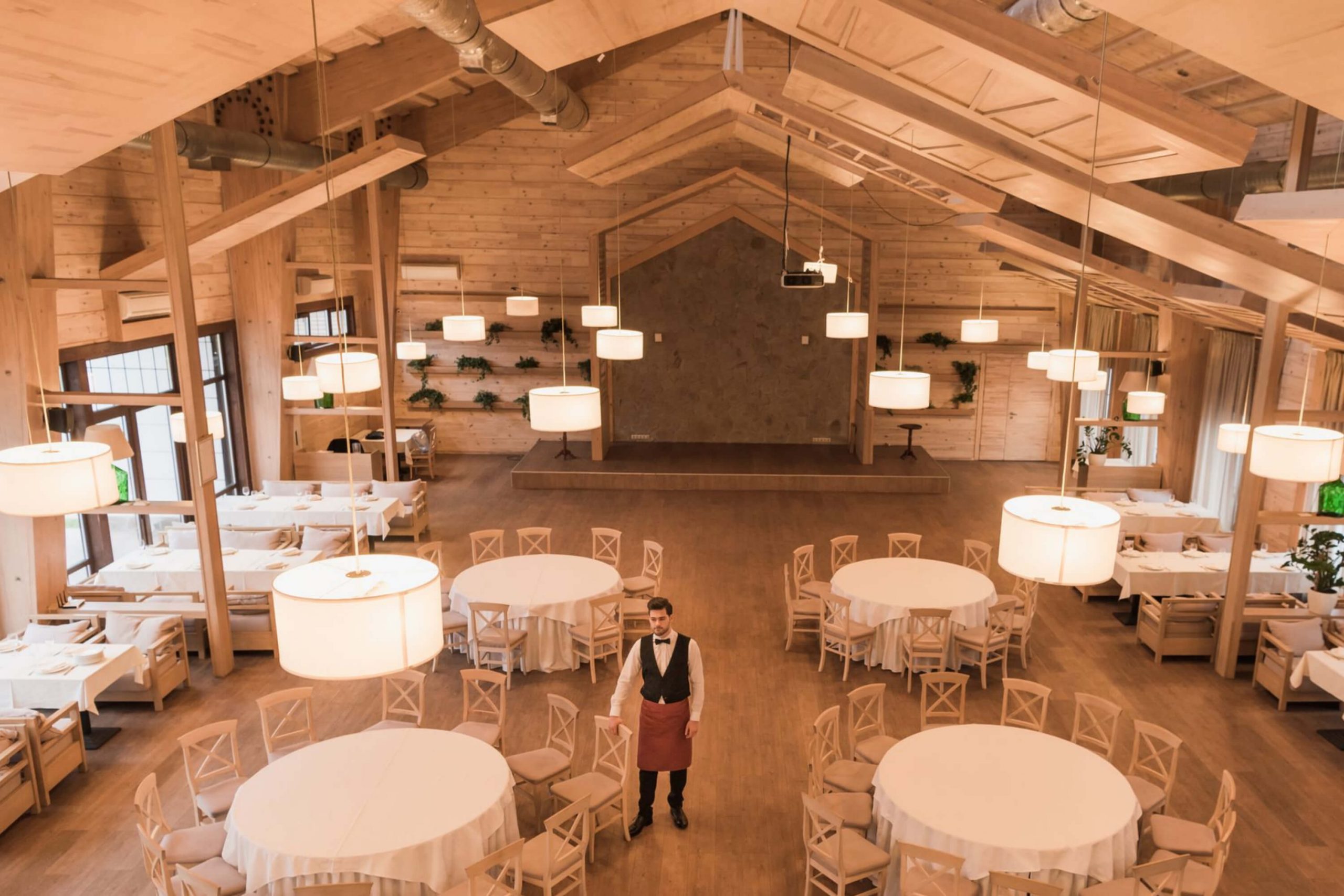
via crello: AllaSerebrina
Related: Does Brown And Blue Match?
Gray Paint On a Sloped Ceiling
Gray is a good color choice for a sloped ceiling because you can create a different vibe using a lighter gray or a deeper hue.
Anyway, using the same color paint makes a room appear more grand, expensive, and cohesive.
Following the color treatment, the focal point can rest on the lighting and flooring for contrast and heightened visual appeal.
What About Blue?
Blue is another great option for a sloped ceiling.
Blue offers a sense of calm and tranquility, it makes windows and white areas look brighter, and works especially well with natural wood, neutral carpets, and ornate area rugs.
Try Out Black As An Option
This color choice may seem a bit unusual to some of you.
However, you should definitely consider coating a high sloped ceiling in a generous coat of rich black paint! But this option should be avoided if the room has lower ceilings.
A darker color like black will make a room feel more intimate and luxurious if it is spacious but cramped if it is small.
By the way, you can create an eye-catching space with high contrast using black paint for the ceiling and bright white for the walls!
With all this in mind, you will be able to not only paint your sloped ceiling correctly like a professional painter, but also to select the most suitable paint color to make a harmonious ensemble with other colors and textures present in the room.
Ever wished paint sampling was as easy as sticking a sticker? Guess what? Now it is! Discover Samplize's unique Peel & Stick samples. Get started now and say goodbye to the old messy way!
Get paint samples




Frequently Asked Questions
⭐Should ceiling paint be flat or eggshell?
It depends on whether the surface is textured or not. A flat coat paint is better for ceilings with a popcorn feel and look. If a ceiling is completely smooth, choose an eggshell with a satin or glossy finish.
⭐How many coats of paint shall I apply to the sloped ceiling?
If you prime the ceiling beforehand or use a paint with built-in primer, one coat is typically sufficient. However, if the ceiling is porous, has a lot of flaws that need hiding, or you are painting fresh drywall, paint two to three coats.
20 thoughts on “How to Paint a Sloped Ceiling?”
Leave a Reply

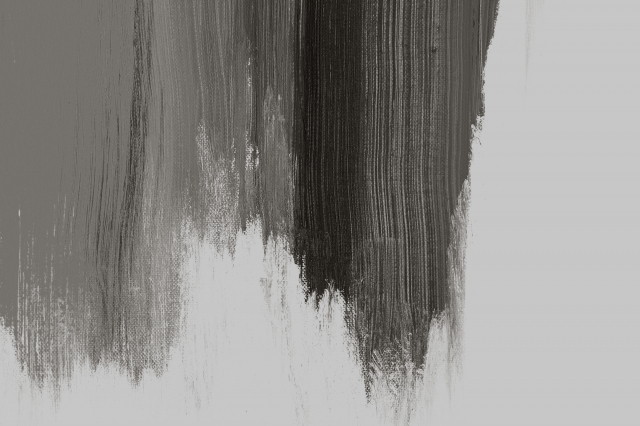

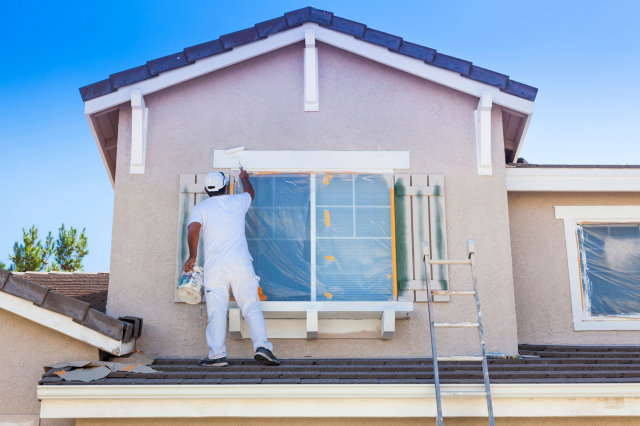




What slanted wall paint ideas would you recommend for a big room with the low ceiling?
How do you guys get spray paint off laminate floors? Could you share some DIY recipes please?
Hello! Could you please share a few slanted ceiling bedroom paint ideas? I want something cozy but not too warm! The room is spacious and has plenty of warm light during the day.
Hello. For your bedroom, we’d recommend soft and light-toned beiges. They will add a cozy vibe to the room and make it feel warm and relaxed.
What color to paint slanted ceiling if the room is not very well lit?
I guess brighter white will be the best option here. The more reflective and crisp the color, the airier and more spacious the room will seem.
What slanted ceiling paint ideas could you recommend for a room with a slanted ceiling?
I guess it depends on the size of the room, and on the lighting conditions in it. If the room is well-lit and spacious, you could use lighter beiges or grays. Or maybe even blue-grays! But in a small and/or poorly lit room, you’d better stick with lighter colors, ideally whites.
I’ve faced a problem that I hope somebody will help me with! How do you cut an angled ceiling in paint? Seriously! I can’t get the point!
Well, you can use caulk but it’ll be very time-consuming. On the other hand, it will create a very crisp, even line where the ceiling and wall meet. As an option, you could also use angled brush but for that, you need a steady hand a bit of practice. Finally, if you’re new to dealing with the angles, you should opt for a ceiling line paint tool.
When you repaint your room’s walls, should you paint an angled ceiling at all if it’s in a good condition?
I guess it depends on how well the color of the ceiling will match the new color of the walls. If the two colors fit together well, then I’d not repaint the ceiling, to be honest. Just to avoid doing extra job! But if the colors don’t match well, then for sure you’ll need to repaint the ceiling too.
What paint color would be best for a sloped ceiling? The room is pretty spacious and light, the ceilings are high, so I’m thinking of something light enough. But not white! I plan to paint this room colorful, maybe light lilac or pink…Haven’t decided yet.
When you have a sloped ceiling, it’s ideal to choose lighter colors for the best results. A slanted ceiling is a great space to create contrast, this is why it should complement the main walls. A lighter paint will make a room feel more spacious and help amplify light. Depending on what color you choose for the walls, you might want to consider light purples, for example. Or, if you have windows on your sloped ceiling, you could also trim them with another color of the similar palette (e.g. a very light pink).
How do you paint high sloped ceilings? I mean, what paint application technique you should use?
I guess the best solution is to ask someone to help you and use an extension ladder. Simply use the ladder to get up to the ceiling-wall corner and cut in the line where the two meet using a brush and a tool called a mini roller.
Has anyone tried to cover sloped ceilings with wallpapers? How did it work?
I wanted to, but then I changed my mind. It seems way too difficult for me. I’d rather paint it all with a paintbrush!
I need to paint my sloped ceiling. Does anyone know whether a paint brush is better for this than a roller?
I’d say use a roller, if you can handle an 18 inches wide one, that would be super great! It will help you to have the job done way quicker.